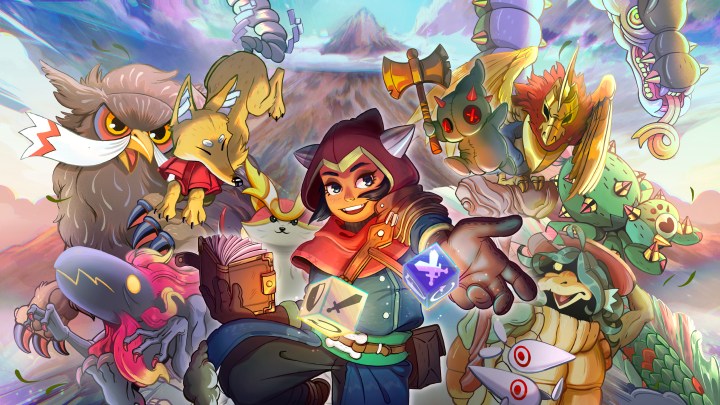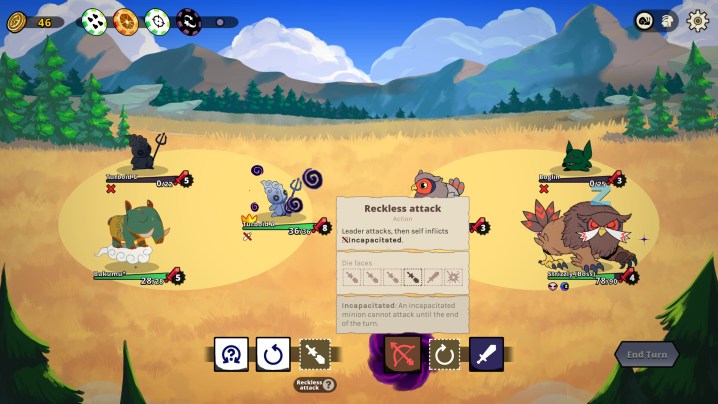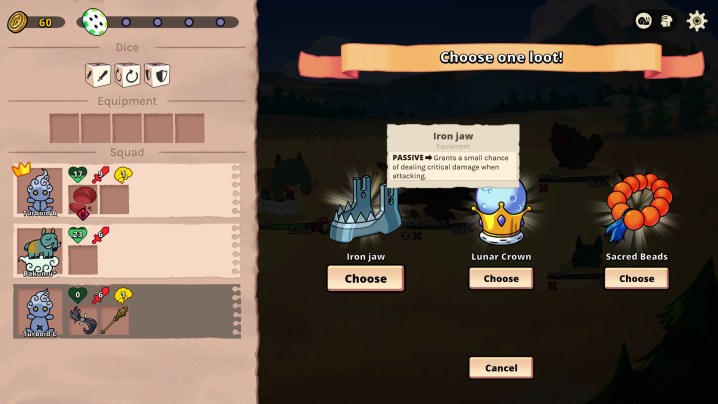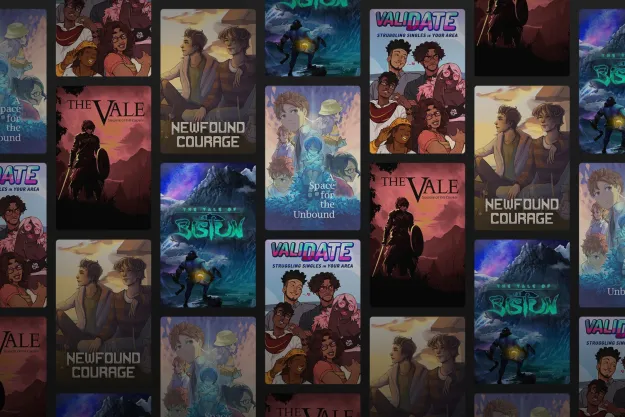
Who would have thought that 2024 would be the year of the monster-collecting game? While several have tried (and often struggled) to recapture the joys of Pokémon, this year’s Palworld is perhaps the first game that’s ever truly been able to pull it off. Granted, it did that by trading in finely tuned RPG combat for Ark-like survival crafting that makes it an entirely different game, but a win’s a win. While Palworld has broken records on Steam, its early access nature means you can hit its bottom quickly — something fans seem to be struggling with as its player count continues to drop.
Thankfully, there’s another monster-catching game you can move on to next. Dicefolk is a new roguelike where players amass a team of animal pals and control them in turn-based battles with dice. As is fashionable as of late, it’s another indie genre fusion that looks to mix roguelikes, deck-builders, and monster-catching RPGs. While it doesn’t excel in any individual category, Dicefolk does offer a creative mash-up of the three that’s sure to find its loyalists.
Gotta roll ’em all
Dicefolk follows a fairly traditional roguelike formula, though one that’s loaded up with twists. When I start a run, I’m dropped into a small map dotted with different icons. Some take me into a battle, while others give me upgrades or let me shop for gear. My goal in each level is to find and defeat the boss encounter, while tackling as many of the area’s challenges as I want to refine my party.
That tried-and-true format comes with two distinct twists. The first is monster catching. I don’t fight any foes directly, but rather have a team of three chimera who I can throw into turn-based battles. Each has its own base attack value, HP, and gear slots that let me equip relics. Since I can only ever have three friends at once, runs are full of tough decision-making as I have to constantly part ways with one monster if I want to add a new one to my party. Runs are about assembling a perfect trio of monsters and upgrading them as best I can to maximize their potential.

That twist would be fresh enough for the genre, but that’s only the “folk” half of the title. More intriguing is its dice deck-building component, which takes Dicefolk in a very unexpected direction. Battles play out like a Pokémon rotation battle where both my monsters and my foes appear in circles on screen. At the start of a combat turn, a set of dice containing actions appears on both mine and the enemy’s side. Those dice contain actions, including attacking, rotating the team left or right, shielding, and more. The turn doesn’t end until I play all of my enemy’s dice, in addition to my own.
It was a little confusing to wrap my head around at first. Part of me is left scratching my head as I try to figure out who I am as a player since I control the action on both sides. It’s some minor befuddlement; all that matters is that it creates a unique combat setup. Battles almost play out like an RPG board game where I need to carefully decide which enemy I’m going to attack at any given time, and deduce the best way to take incoming damage to keep my party healthy. In one turn, I might rotate one enemy out for one with a weaker attack value before letting it hit one of my pals. Or perhaps I’ll rotate one of my own pals into the lead position while protected with a shield, allowing it to safely tank a hit for the team. That’s the kind of strategy a round requires.
There’s some roguelike customization and deck-building hooks that latch onto that idea. Blacksmiths allow me to graft different actions onto my die faces, letting me tweak what my pals can potentially do on a turn. I can also buy held items for my team, which gives each critter passive perks that can change my strategy. On top of that, I can hold on to a few one-time-use poker chips that I can use during any battle to drop in some extra healing, damage, and more.

While there are a lot of neat ideas here, they don’t always fit together. The dice and monster catching elements can feel disparate at times, with not a lot of synergy between dice and items. I’ve yet to crack the flow of a successful run, as I’m left juggling the little money I get during a run between upgrading the two systems. It’s a lot to manage considering that battles quickly scale up in difficulty and healing options between them are scarce.
Though it’s yet to fully click with me, the core idea of Dicefolk carries a lot of charm. The dice-based combat rewards players that have a knack for “order of operations” planning. And if nothing else, it’s great to see someone mess around with Pokémon’s long-lost rotation format to great effect. If you’re simply on the hunt for more colorful pals, Dicefolk provides that with an extra layer of strategy that I can’t imagine will be cloned anytime soon.
Dicefolk launches on February 22 for PC.
Editors' Recommendations
- If you can’t get enough Palworld, try these great games next
- 6 outstanding game demos you need to try during Steam Next Fest
- You need to try this new, adrenaline-fueled Xbox Game Pass highlight
- Our favorite indies of 2023: 10 unforgettable games you need to try
- Lego Fortnite is way more expansive than you’re probably expecting




